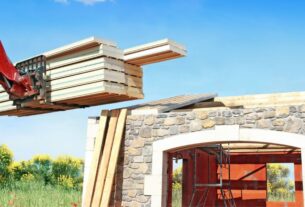Introduction
Heavy industry depends on reliable systems to power operations, move resources, and maintain safety in demanding environments. From offshore platforms and marine projects to mining sites and large construction zones, cables are the lifelines that keep communication, energy, and equipment running smoothly. However, these cables often face extreme conditions, making them vulnerable to wear, tangling, and even complete failure. To address these challenges, industries turn to Cable Floats, a simple yet highly effective solution.
By offering buoyancy and support, Cable Floats keep cables secure and functional, even in harsh and unpredictable environments. With the right equipment, such as products from Pipe and Hose Floats, industries ensure their cables remain intact, operational, and safe.
Marine and Offshore Applications
In marine and offshore projects, cables often extend across long distances above or below the water’s surface. Left unsupported, these cables can sink, twist, or get damaged by waves and currents. Such disruptions can bring critical operations to a halt, whether in shipping ports, offshore drilling rigs, or underwater construction.
Here, Cable Floats provide consistent buoyancy, keeping cables above water and organized. They act as part of marine cable support systems, which ensure cables remain in place and protected against constant movement. This makes inspection, repair, and replacement much easier, while also preventing downtime caused by cable damage. Industries that rely on offshore operations know that a single failure in power or communication lines can cause costly delays, which is why the use of floats has become standard practice.
The adaptability of solutions from Pipe and Hose Floats ensures they can meet the needs of diverse marine conditions, from calm harbors to deep-sea operations. As a trusted addition to marine cable support systems, their durability offers reassurance for companies handling continuous offshore workloads.
Mining Operations
Mining sites often span vast, rugged areas where heavy equipment, water, mud, and dust are constant factors. Electrical and communication cables are necessary for powering machinery and connecting different sections of a mine, but when these cables are left exposed on the ground, they face rapid wear and pose safety hazards.
By elevating cables with Cable Floats, mining companies reduce contact with abrasive surfaces and standing water. This not only prevents equipment breakdowns but also lowers the risk of accidents caused by exposed or damaged wires. In remote mining environments, where replacement parts and repair crews may be far away, ensuring cables remain functional is essential to uninterrupted production.
Durable products like those from Pipe and Hose Floats are particularly valuable in mining because they are designed to withstand harsh, abrasive environments while still providing long-lasting performance. Their role in industrial cable protection helps safeguard cables against environmental threats while maintaining efficiency. Companies that prioritize industrial cable protection see fewer failures, greater safety, and smoother operations.
Dredging and Large-Scale Construction
Dredging projects, whether in rivers, harbors, or coastal zones, depend on cables and pipelines to power equipment and transport materials. These cables are exposed to constant movement, heavy loads, and water pressure, creating a high risk of damage. Cable Floats keep them stable and above water, preventing entanglement or submersion. As a result, dredging equipment runs efficiently and projects are completed on schedule.
In construction, particularly in areas near rivers, lakes, or wetlands, floats also serve an important function. Temporary power and communication lines need protection to maintain smooth project operations. By using Cable Floats and reliable buoyancy devices for cables, construction managers reduce downtime and protect workers from electrical hazards.
Solutions offered by Pipe and Hose Floats are especially effective in these industries because they combine durability with flexibility, ensuring compatibility with varying cable sizes and project needs. Their use of buoyancy devices for cables ensures long-term stability and consistent performance under heavy demands.
Environmental Protection
Another vital aspect of using Cable Floats is environmental safety. Damaged or submerged cables can cause electrical leaks, release hazardous materials, or disrupt aquatic ecosystems. By keeping cables stable and elevated, floats reduce the chances of accidents that could harm the environment.
When used as part of marine cable support systems, floats help ensure projects meet strict environmental standards, particularly in sensitive coastal or offshore areas. Industries working in these regions benefit from this added protection, as compliance with regulations is crucial for avoiding penalties and maintaining a responsible image.
The materials used by Pipe and Hose Floats are designed to resist degradation, further ensuring that industries can maintain both safety and sustainability standards. Incorporating buoyancy devices for cables into operations not only protects the environment but also demonstrates a long-term commitment to sustainable practices.
Longevity and Cost Efficiency
The cost of replacing damaged cables, repairing systems, or facing project delays can be immense in heavy industry. By integrating Cable Floats, companies not only protect their infrastructure but also extend the lifespan of their cables. This makes operations more efficient and reduces long-term costs.
With products from Pipe and Hose Floats, industries also gain the advantage of reliable performance in diverse conditions, ensuring their investment delivers long-term value. Their designs contribute significantly to industrial cable protection, safeguarding systems from unnecessary downtime.
Furthermore, incorporating buoyancy devices for cables into everyday operations provides the stability required for high-stress industrial projects. This integration reduces maintenance needs, optimizes safety, and supports seamless project management. Over time, such strategies demonstrate that industrial cable protection is not just about safety but also about long-term profitability.
Conclusion
Cables are indispensable in heavy industry, yet their exposure to harsh environments creates ongoing risks. From offshore platforms and mining operations to dredging projects and construction sites, Cable Floats play a crucial role in protecting and stabilizing these vital lines. They ensure safety, enhance operational efficiency, and minimize environmental risks.
For industries seeking reliable, adaptable, and durable solutions, companies such as Pipe and Hose Floats offer products that meet these demanding requirements. Whether as part of marine cable support systems, through advanced industrial cable protection, or with effective buoyancy devices for cables, these solutions safeguard projects and provide long-term benefits. By investing in the right floats, industries not only protect their cables but also ensure smoother, safer, and more cost-effective operations.




